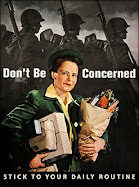cap-and-trade is a market solution to energy concerns in this article
from June, 2008 for the Institute For Energy.
-
Cap & Trade Is Not A Market Solution
by Robert E. Murphy for http:
As the U.S. Senate debates climate change legislation this week, many have proclaimed the virtue of its “cap and trade” system as a “market solution” to reducing carbon emissions. Nothing could be further from the truth.
Unlike a direct tax, cap and trade is a European-style scheme that masks its negative consequences on the economy behind the rhetorical benefits of new government programs designed to help us. In truth, neither is good for consumers or the economy, but a closer look reveals why so many politicians find comfort in cap and trade.
The economic argument for penalizing carbon emissions is straightforward
If one agrees so far, the next question is which mechanism should be used to raise the pain of carbon emissions? One approach would have the government levy an outright tax. This is favored by most economists, and a Congressional Budget Office (CBO) analysis in February recommended a carbon tax because of its efficiency in meeting climate change targets. But politicians shy away from the dreaded T-word, especially with the economy entering recession and energy prices hitting all-time highs.
Enter cap and trade, which gives only the illusion of reducing carbon emissions without imposing costs on the average citizen. In this approach, the government distributes permits that entitle the holder to emit a specific quantity of carbon dioxide. The trick is that these permits would be tradable in the market, just as surely as shares to IBM or contracts on copper futures.
This, unfortunately, is why some have mistakenly viewed a cap and trade program as a “market solution.” Because the carbon permits are turned into property with a market price, they should end up in the hands of those who value them the most, i.e., the most efficient emitters. In theory this means that a cap and trade system achieves a desired reduction in carbon emissions at the lowest possible compliance cost.
For example, if the government arbitrarily decreed that every firm had to reduce its carbon emissions by 10 percent, this would cause unnecessary economic damage, because it is much easier for some operations to scale back emissions than others. If instead the government issued tradable permits allowing total emissions of 90 percent of the previous year’s amount, then the desired reduction would be much cheaper. Those firms that could scale back more easily would do so, and would sell their permits to those firms that found it too expensive to cut emissions. It is the elegance of this outcome that has hoodwinked market enthusiasts into supporting cap and trade.
Yet despite the superficial resemblance, cap and trade isn’t really a free market. The number of permits is an arbitrary scarcity imposed by government fiat. In the real market, resource prices indicate genuine scarcity. If an oil pipeline is attacked, the price of oil goes up, causing industry and consumers to economize on the commodity. This response is rational, because the available supply truly has gone down.
But if the prices of oil, coal, and other fossil fuels explode because of a cap and trade program, this won’t reflect genuine economic scarcity. Consumers will be forced to restrict their use not because there is less supply available, but because of a number dreamed up by Washington bureaucrats. This is no more a “market price” than if the government decided to sell people permits giving them permission to sneeze. (This actually makes sense, since exhaling emits CO2.)
Cap and trade is not a market-based solution. It relies on a political scheme to increase costs, and can therefore be justly viewed as a tax, stealthy or otherwise, on energy - the lifeblood of our economy. So here’s the real difference: cap and trade masks the causes of higher consumer prices much better than a straightforward
Murphy is an economist with the Institute for Energy Research. He received his Ph.D. in economics from NYU. He has written and lectured extensively on the benefits of market-




























No comments:
Post a Comment